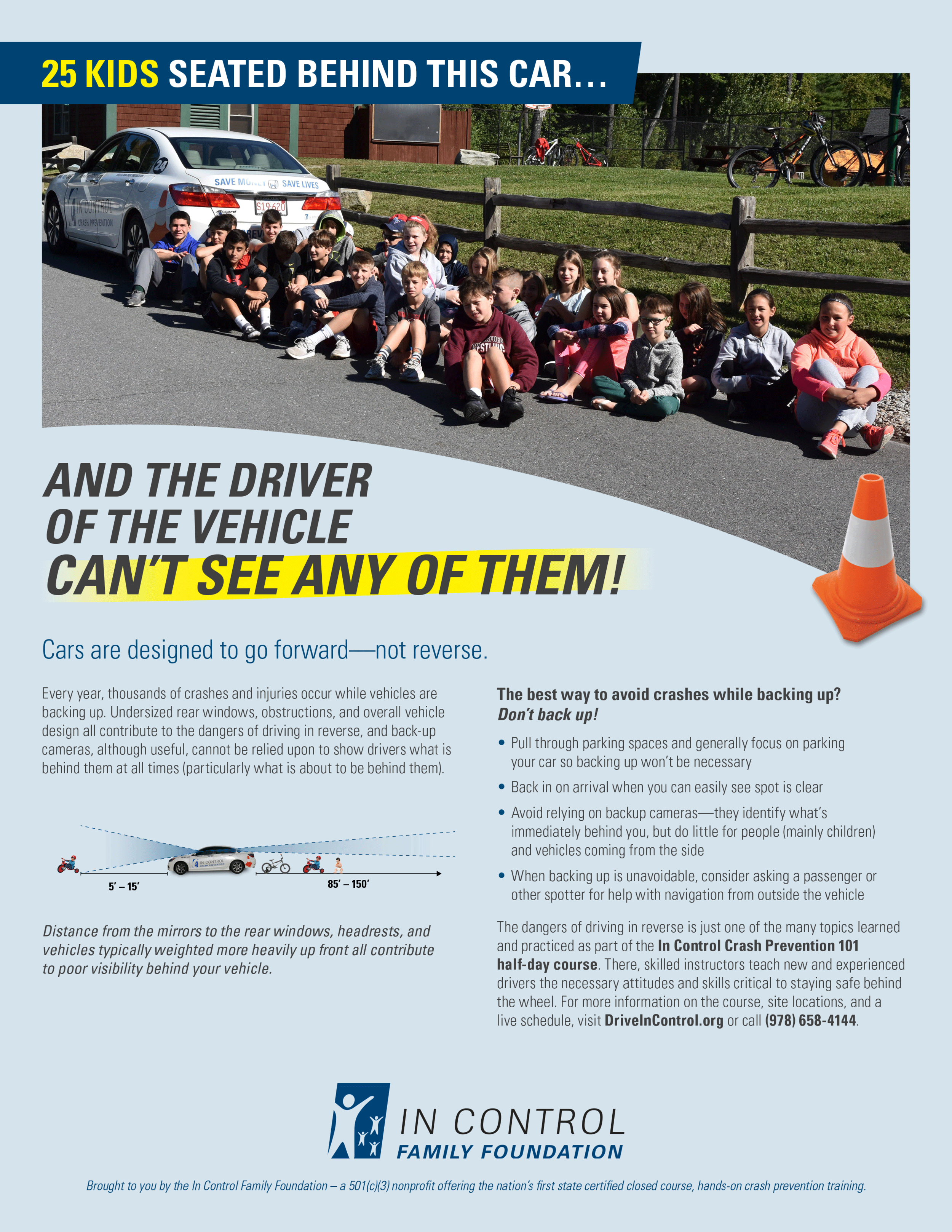Backing up is dangerous and should be avoided.
Vehicles are designed primarily for driving in the forward gears. Of course, they do have the ability to go in reverse, but there are certain concessions that are made when the car is moving backwards. Whether it be the driver’s vision, brakes, seat belts, or even steering control, engineers and designers' primary concern for control and safety is in the forward gear. Just look at the flyer below: 25 children are able to fit behind the vehicle without the driver able to see them. Newer cars tend to have backup cameras which make seeing directly behind the vehicle a bit easier, but still give the driver a distorted view.
Because of the limited vision, control, and safety features of driving in reverse, here are some ground rules:
DON’T BACK UP FLYER
Don’t drive in reverse - This advice seems silly until you start thinking about whether or not you really need reverse in many situations. If your car didn’t have the ability to reverse, you’d always be thinking about setting yourself up so you wouldn’t get stuck. I think you’d be surprised how seldom you’d actually get stuck if you tried to avoid backing up. Take pull-through parking spaces at stores, is there a way you can go a long distance forward to avoid backing up?
If you have to go in reverse, go slowly - If reversing is necessary you shouldn’t need to hit the gas pedal at all (at least with an automatic transmission car). With a manual transmission, it should still only be feathering the accelerator to keep the speed down. Make sure to keep your foot resting lightly on the brake pedal to keep the speed down and be able to stop abruptly if needed. Nothing in reverse should be done fast. Not only will this technique allow for more control and more time for people to move out of your way if they should need too, but any incident you're involved in is likely to be less severe.
If you have to go in reverse do it when you first arrive somewhere instead of when you’re leaving - When you nose your vehicle into a parking spot, you force yourself to reverse out somewhat blindly later on. Best practice is to back yourself into the parking space so you can nose out of it when you leave. There are some huge advantages to driving this way. First, we are often in a rush when we leave places, and in less of a rush when we get there, so our mindset might end up keeping us safer. Second, when we back into a parking space we get to first pass the space and scope it out. When we are setting up to get into the space, our car is in the forward gear where we have the most control. This means when we do start backing up we need minimal steering input, we have a short distance to travel, and we’re traveling into a fairly controlled area (the parking space). The real advantage comes when we go to leave this space and we have the ability to nose out of the space with good vision and good car control.





